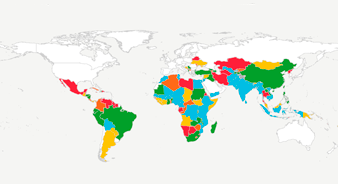Indicator 6.a.1 “Amount of water- and sanitation-related official development assistance that is part of a government-coordinated spending plan”
Target 6.a seeks to expand international cooperation and capacity building – this page explains why and how to monitor progress towards the target.
The indicator at a glance
Indicator 6.a.1 tracks the amount of official development assistance (ODA) that is included in a government-coordinated spending plan:
- ODA is official financing from donor government agencies, with a primary objective of promoting economic development and welfare in developing countries. The DAC List of ODA Recipients shows all countries and territories eligible to receive official development assistance (ODA).
- A government-coordinated spending plan is defined as a financing plan/budget at the national or subnational level, clearly assessing the financial resources available and the strategies for financing future requirements.
A high value would indicate that donors are aligned with government and national/subnational policies and plans for water and sanitation. Currently, data are only available on the amount of ODA disbursed.
Available support
The World Health Organization (WHO) and Organization for Economic Co-operation and Development (OECD) are the custodians of indicator 6.a.1. For any enquiries about available support, please contact their helpdesk.
Guidance on data collection and reporting
- WHO: Monitoring methodology.
- WHO: Country survey documents and instruction modules for GLAAS 2021/2022 cycle.
- UN-Water: Data collection process and timeline.
Online support
- WHO: Helpdesk (email, phone, video conference).
Data and progress reporting
- UN-Water: SDG 6 Data Portal.
- WHO: 6.a.1 data (GLAAS data portal).
- OECD: 6.a.1 data (International Development Statistics online databases)
- UN-Water: GLAAS 2017 Progress Report.
- UN-Water: GLAAS 2019 Progress Report.
- UN-Water: GLAAS 2022 Progress Report.

Why monitor financial flows?
Financial monitoring results in transparency and a better understanding of the financial flows in the sector, which in turn can increase efficiency and stimulate further internal and external funding.
